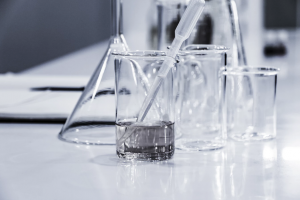Dr. Chih Wei Teng is Chief Operating Officer for CCRM Australia and wrote this blog with colleagues Alex Barrington and Dr. Emma Gallaher. To subscribe to the CCRM Australia newsletter: Click here

Photo by Hans Reniers on Unsplash.
Regenerative medicine is a risky business. The decades-long development pipeline and the expenditure of millions of dollars presents itself as an insurmountable mountain for many researchers. The regenerative medicine commercialization roadmap is fraught with risks and, with a notorious high cash burn rate, the prospect of realizing a cure for an aggressive disease can be very daunting.
As an industry we must begin to address future challenges faced by cell therapies that will reach the market in the next five years and beyond. As an industry, we need to recognize that these challenges cannot be addressed using today’s technology. We must forecast and begin to develop the next generation of tools and protocols that are not therapy specific, but will be designed to benefit the industry as a whole or classes of therapies.
With the ingenious idea of harnessing the body’s cells to facilitate wound healing, the curative potential (and profits) of stem cell-based technologies and innovations is boundless. However, a lack of risk mitigation and quality control in the process of cell therapy development and manufacturing can constrict not only treatment outcomes and the bottom line, but also the viability of the industry.
The sector has identified the development of cutting-edge sensor technology to be the next logical step in improving risk mitigation, quality control and operational efficiencies. Not only can novel sensors form the safety net for day-to-day functions, but they also create a new stream of valuable, highly sensitive and high resolution data that can inform future regenerative medicine research.
Research Professor Nicolas Voelcker, who works in Monash University’s Drug Delivery Disposition and Dynamics in the Faculty of Pharmacy and Pharmaceutical Sciences, knows this issue all too well.
“A key challenge in regenerative medicine is improving and transforming quality control,” commented Professor Voelcker. “This is particularly important in the production of cell batches to be delivered to patients.”
The Importance of Sensors in Regenerative Medicine
With in-reactor sensors providing real-time measurements of both cellular and environmental parameters, such as cellular composition, specific biomarkers in situ, and media conditions, the information they provide to researchers would significantly enhance the ability to evaluate mechanisms of function and lower the risk involved in the development pathway. For Dr. Dawn Driscoll, CEO of Cell Therapies, a cell contract manufacturing company, sensors are critical in risk mitigating and ensuring the quality of cellular products.
Sensors are currently being used, but their capabilities are in their infancy. “We have a large variety of sensors that we incorporate into our processes,” said Dr. Driscoll. “They serve a variety of functions to ensure that the cells we produce are of the highest quality, utility, and are as controlled as possible. For example, we have sensors that track temperature and pH levels for cultures.”
The data currently being captured are, in essence, low hanging fruit and do not represent the complexity of information that could be unlocked with more sophisticated sensor technology. It is these types of sensors that we see having an impact on the evolution of the industry. For example, Gerry McKiernan, Quality Manager for Cell Therapies Pty Ltd explained, “time from collection of cells to administration of finished products is proving to be a key factor in both effective patient treatment and gaining market share for many current cell therapy products. In-process sensors that can provide release for supply assay results for cell count, cell viability, phenotype, transduction, endotoxin, mycoplasma and microbial contamination would greatly assist in reducing these timelines and would be a huge benefit to the industry as a whole.”
What next?
CCRM Australia would like to form a working group to identify the challenges faced in research and commercial activity that can’t be resolved with the implementation of the sensors of today. We see the opportunity to craft the specifications for the next generation of sensor technology. To date, only preliminary discussions between research and industry in the U.S. have been held. There is a genuine opportunity for the local Australian innovation system to leverage this commercialization opportunity to look beyond solving the issues of today, but in creating a globally exportable product (with relatively low freight costs).
More information:
To discuss the evolution of sensor technology and commercialization opportunities, please contact Dr. Chih Wei Teng via chihwei.teng@ccrmaustralia.com.au.
(Ed: CCRM also uses traditional and established sensor technology to measure pH, dissolved oxygen, temperature and agitation rates and we had a long running sensor evaluation project where we looked at new and old technology for suitability of application in cell and gene therapies. An example of this would be work we did to evaluate capacitance, glucose and lactate sensors adapted from other industries, as well as more advanced technology applications like Raman and IR spectroscopy. A potency/quality sensor would be ideal.)
CCRM Australia
Latest posts by CCRM Australia (see all)
- CCRM Australia: Lessons from the front line of commercialization - October 1, 2025
- CGTs in elite sport: The pinnacle of human evolution or the unnatural demise of fair competition? - April 21, 2025
- Learnings from First Nations’ traditional medicine could enhance the effectiveness of regenerative medicine - October 6, 2023






Comments